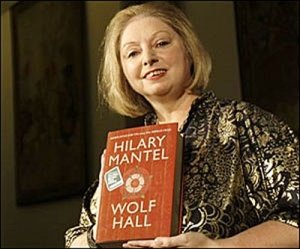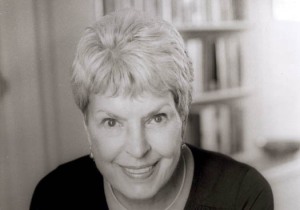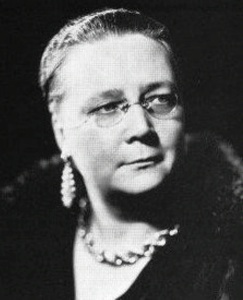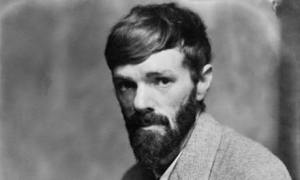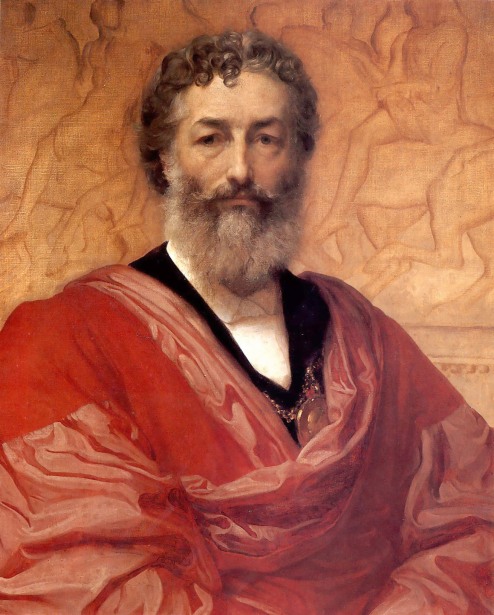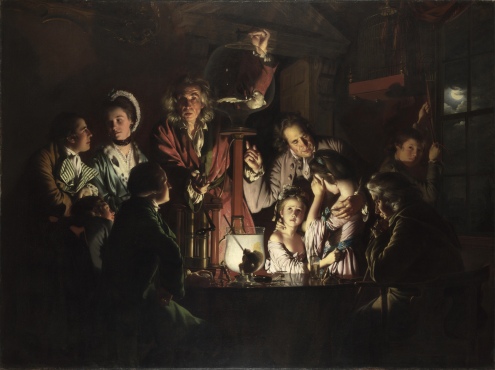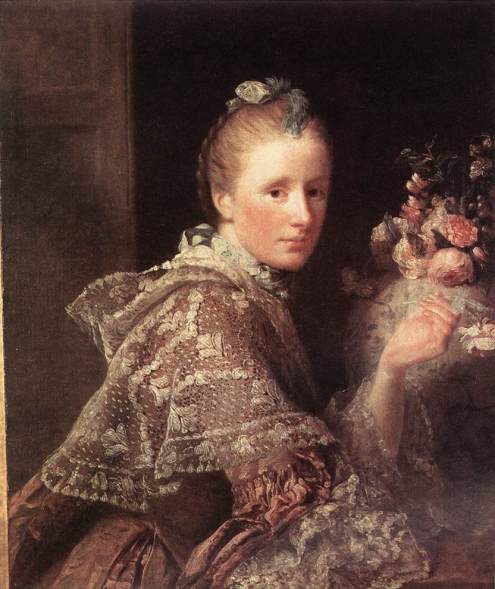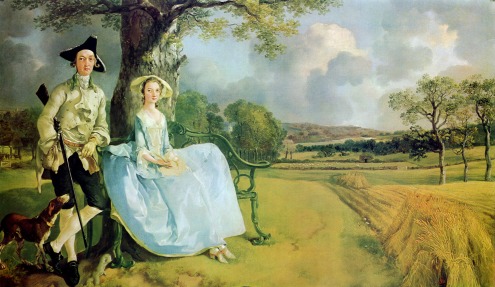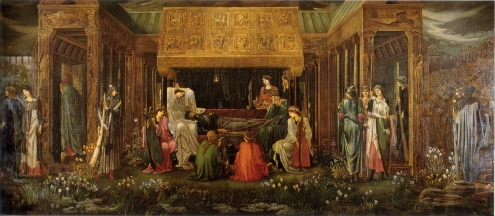O, to be in England….
Last November, there appeared in Harper’s Magazine an article entitled “Broken Britain” by journalist Ed Vulliamy. Written partly in response to the rioting that occurred in August, the piece had virtually nothing good to say about the current state of things in that beleaguered island nation:
On the worst day of street violence, stock values plunged to their lowest all year. A few days after the riots had ended, it was revealed that one in five Britons between the ages of sixteen and twenty-four are unemployed, and that more applicants for university and college would be turned away than ever before. Cameron spoke of a “slow-motion moral collapse” of the country he used to call, when in opposition, “broken Britain.” He insisted on the need to confront “the attitudes and assumptions that have brought parts of our society to this shocking state,” including “irresponsibility, selfishness, behaving as if your choices had no consequences.”He was as virtuous as he was four-square, despite his porcelain complexion and weak chin. But he himself has been tainted by scandal….
On it went, page after page of unrelentingly negative reportage. As well as government officials, members of the royal family were included in the smack down. I would say it was an almost gleeful piling on, were the tone not half so bitter:
Britain itself is a corporate mediocrity, a place where the customer is almost always wrong and people always seem to be working but not much gets done very well. Ineptitude is packaged with a wrapping of present participles, as though an advertising agency had taken over the government and the economy alike,which, in a way, it has: British Gas is“Looking after your world,” British Telecom is “Bringing it all together for London 2012,” while the Metropolitan Police are “Working together for a safer London.” But behind the silly slogans, a combination of greed, incompetence, and increasing authoritarianism is making Britain not only an inefficient but a disagreeable place in which to live—a country now characterized by lost good manners, opportunism and prying.
After reading this article, I was depressed for days. Did this mean that as a visitor to Britain four times in the past eight years, I was merely a starry-eyed, gulled tourist, one who’d come away with the impression of a people who were alive and vibrant, and a countryside whose beauty was almost unearthly?
Now here comes Niall Ferguson, writing in a recent issue of Newsweek, to answer my question somewhat regretfully in the affirmative. Ferguson doesn’t come close to matching Vulliamy’s vituperative, excoriating tone. Nevertheless, he is anxious for, and bewildered by, his homeland, which he compares to fin-de-siècle Vienna in its last throes of ‘nervous splendor:’
In particular, Ferguson declares himself astonished by the lavish plans for the celebration of Queen Elizabeth’s Diamond Jubilee:
Last week I watched an astonishing number of bandsmen in bearskin hats and bright red tunics rehearsing for the jubilee celebrations, which culminate next month. Stuck in the resulting traffic, I had time to ponder why, at a time of deep cuts in defense spending, Britain can still afford the world’s finest military bands.
“Austerity” has become the watchword of David Cameron’s premiership as he grapples with the huge deficits run up by his Labour predecessors. Yet there is nothing austere about the Diamond Jubilee. On June 3, according to the official website, “Up to a thousand boats will muster on the river as the Queen prepares to lead one of the largest flotillas ever seen on the River Thames.”
Ferguson does make this concession: “Like Vienna a century ago, London today is one of the world’s most creative cities.” He goes on to name Ian McEwan as his favorite novelist. Fair enough; I too am a McEwan fan, though Solar by and large did not work for me. At the moment, I’m trembling with anticipation at the prospect of reading Bring Up the Bodies, Hilary Mantel’s sequel to the harrowing and spectacular Wolf Hall. (In Slate, William Georgiades posted a review entitled “Hilary Mantel’s Heart of Stone;” the piece is subtitled: “A brilliant follow-up to Wolf Hall from an author whose anger would rip a roof off.'”)
Meanwhile I’m still working my way though The Last Pre-Raphaelite, Fiona MacCarthy’s splendid biography of Edward Burne-Jones. At the same time, I’m happily immersed in Peter Robinson’s Before the Poison. Oh – and I am having the jolliest time with John Sutherland’s Lives of the Novelists – about which more, in a later post.
Fact is, I’ve read so many fantastic books by and about British authors lately that I could not begin to enumerate them. How do I love the British writers? Let me count the ways:
Of course, this is merely a modest selection from a prodigious list. A good source of information about British and Commonwealth authors can be found at the British Council’s Literature site. (I’d also like to suggest my post entitled Six Gifted Englishwomen.)
I would have to be very naive and oblivious not to acknowledge – especially given the riots of last August – that there is plenty of grief and anger in Britain today, for a variety of reasons. I just got upset all over again by several of the opinion pieces at the site What England Means To Me. It is heartbreaking to read articles like these; their authors are so nearly despairing. So I offer what I hope may act to some small degree as a counterweight to this pain. Here is a sampling of art, music, and film from the British Isles, a place I love deeply:
Finally, there’s some fascinating material in my post on The History of British Art by Andrew Graham-Dixon.
**********************
*********************
Sir Laurence Olivier as Henry V, in Shakespeare’s history play:
***********************
***********************
**********************
**********************
**********************
**********************
*******************
(The Yorkshire adventure was actually my adventure, in 2005 – my first trip to the UK in twenty years. The music is “The Lark Ascending,” by Ralph Vaughan Williams.)

Whitby: Folk go about their shopping in the town, while the ruins of Whitby Abbey, founded in the seventh century AD, brood above them
Scenes from our recent trip to the Welsh borders, a place off incredibly, unspoiled beauty:
For Royal watchers, here are two sites you might enjoy visiting: The Monarchist, and the official website for Queen Elizabeth’s Diamond Jubilee.
*********************
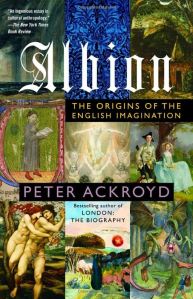 In Albion: The Origins of the English Imagination, Peter Ackroyd is both informative and eloquent on the subject of the Arthurian legends, in a chapter entitled “He Is Not Dead:”
In Albion: The Origins of the English Imagination, Peter Ackroyd is both informative and eloquent on the subject of the Arthurian legends, in a chapter entitled “He Is Not Dead:”
The sleep of Arthur in the unknown region of Avalon has…been related to Plutarch’s invocation of the old British belief that the great god Cronos still sleeps upon an island surrounded by waters. This in turn has been related to the myth of the original Albion, which has been associated with the legend of Atlantis; the Druids were supposed to believe that Albion, the spirit or embodiment of the English, was an original portion of the lost continent.
Ackroyd then cautions: “It is a very rich, not to say heady, brew. Any attempt to drink it will inevitably lead to numbness and disorientation.” This comes later in the same chapter:
The story of Arthur has always been striated with sensations of loss and transitoriness, which may well account for its central place within the English imagination; the native sensibility is touched with melancholy…and the sad fate of Arthur and his kingdom corresponds to that national mood. There is something, too, of determination and endurance within this dominant sensation….That combination of bravery and fatalism, endurance and understatement, is the defining mood of Arthurian legend.
****************************
Finally, on a lighter note: a clip from one of my favorite episodes of Chef! – my favorite British comedy, and a short, gently satirical comedy entitled Duel at Blood Creek.
***************************
Derby Day, by D.J. Taylor
 D.J. Taylor’s Derby Day has to do primarily with racetrack shenanigans in mid-nineteenth century England. Taylor has assembled a raffish and thoroughly entertaining cast of characters, both equine and human. Where the latter are concerned, each has his or her scheming eye on the main chance. (A possible exception is Miss Ellington, a young governess who finds herself unwittingly embroiled in the devious machinations of those far more worldly wise than herself.)
D.J. Taylor’s Derby Day has to do primarily with racetrack shenanigans in mid-nineteenth century England. Taylor has assembled a raffish and thoroughly entertaining cast of characters, both equine and human. Where the latter are concerned, each has his or her scheming eye on the main chance. (A possible exception is Miss Ellington, a young governess who finds herself unwittingly embroiled in the devious machinations of those far more worldly wise than herself.)
Part of what makes Derby Day so much fun to read is the author’s effortless mastery of the lingo of mid-Victorian England. This goes for race track touts and aristocrats alike. Their world comes vividly and memorably to life: its sights, sounds, and peculiarities. The novel puts one in mind of Charles Dickens; indeed, mention is made of ‘Mr. Dickens’ on several occasions.
Taylor’s writing is spiced with wit and colorful imagery. In one scene, during a light repast, the gentle and rather hapless Mr. Gresham is attempting to discourse on matters of importance with his daughter. For her part, Rebecca Gresham is anything but hapless: “…the daughter crunched up her toast like some white-armed siren feasting on the bones of drowned mariners….”
Taylor possesses a vivid feel for the history of specific locales. Several scenes in the narrative take place in the Lincolnshire countryside; they concern two adjacent estates, Scroop, which belongs to the Davenants, and another belonging to Mr. Glenister, a bachelor:
This is an ancient part of the world. There are people here, in this corner of England, next to whom the Davenants are brazen interlopers, people who have farmed land for six hundred years. ‘Scroop’ itself is Old Norse, but there were settlers here before that. A year since, one of Mr. Glenister’s men found a coin in an upturned furrow, which a Lincoln antiquary dated to the reign of the Emperor Constantine. It sits on the study mantelpiece, along with a tobacco jar sporting the arms of Mr. Glenister’s Cambridge college and the portrait of his mother.
One of Taylor’s sources for his vivid recreation of things past was My Autobiography and Reminiscences by W.P. Frith. William Powell Frith was an artist of the Victorian era. The Derby Day is one his most famous paintings:
David John Taylor is a writer new to me, whose acquaintance I’m happy to have made. He’s not only a novelist, but also a critic and a biographer (of Thackeray and George Orwell). In other words, he’s yet another of those literary prodigies that Britain still regularly produces, for the delight and edification of the rest of us. (Derby Day made the long list for the 2011 Man Booker Prize.)
Lately I have been in need of reading that is somewhat less fraught and more lighthearted than the usual fare. Not altogether frivolous, mind you – the same requirements apply as always: excellent writing, great sense of place, memorable characters, compelling story. By Jove, Derby Day was just the ticket, on all counts!
Rudyard Kipling was Edward Burne-Jones’s nephew by marriage!
Yes – I know….
You see, I’m reading The Last Pre-Raphaelite by Fiona MacCarthy. About a third of the way through her narrative, the author informs us that in 1865, Alice, the elder sister of Burne-Jones’s wife Georgiana – Georgie to all who knew her – married a young artist named John Lockwood Kipling. Kipling had secured a teaching post in Bombay, so he and Alice relocated there shortly after their wedding:
John Lockwood’s career prospered, and on 30 December 1865 they had their first child, the boy who was named Rudyard after Lake Rudyard in Staffordshire, hallowed place where his parents had first met.
I love discovering interrelatedness among great artists and thinkers. My favorite instance of this felicitous phenomenon concerns Ralph Vaughan Williams. His mother Margaret Susan Wedgwood was the great-granddaughter of Josiah Wedgwood of pottery fame; Charles Darwin was the composer’s great-uncle. 
The Last Pre-Raphaelite is subtitled, ‘Edward Burne-Jones and the Victorian Imagination.’ Some of us can never get enough of those Victorians: their natures seem so varied, so contradictory, so extremely pragmatic and yet oftentimes downright dreamy. In her preface, Fiona MacCarthy says this of Burne-Jones:
He had become the licensed escapist of his period, perpetrating an art of ancient myths, magical landscapes, insistent sexual yearnings, that expressed deep psychological needs for his contemporaries. His paintings released forces half-hidden in the deep recesses of the Victorian imagination.
The artists who comprised the Pre-Raphaelite Brotherhood were in revolt against what they perceived as the rampant materialism and the relentless moralizing of the age in which they lived. One of their chief aims was to reclaim through their art the spirit, if not the substance, of the Middle Ages – in other words, to go back in time to a period before Raphael, one of the supreme artists of the High Renaissance in Europe. Woven in with this love of the past was a fascination with a past that never was: myths, fairy tales, and legends.
In his art, Edward Burne-Jones strove constantly to attain an ideal of beauty:
‘I mean by a picture a beautiful romantic dream of something that never was, never will be – in a light better than any light that ever shone – in a land no one can define or remember, only desire – and the forms divinely beautiful.’
The Last Pre-Raphaelite is a leisurely stroll though the life of an artist and the era whose esthetic proclivities he helped to define. I’m on page 208 out of 536 pages, and I wish the book would never end. Fiona McCarthyis a marvelous writer; she’s also done a biography of Burne-Jones’s lifelong friend, fellow artist, and business partner William Morris.
By the by: the American cover (the first one, below) is lovely; the British one, even more so.
As you view these works, I suggest the music of Ralph Vaughan Williams as an accompaniment. This is ‘Romanza,’ the third movement from Symphony Number Five:
Did Burne-Jones achieve his goal of depicting his ‘beautiful romantic dream?’ You decide:
This painting famously adorned the cover of A.S. Byatt’s Booker Prize winning novel, Possession: A Romance (1990). 
Burne-Jones began work on The Last Sleep of Arthur in Avalon in 1881 and did not complete the painting until 1898, the year of his death. Many consider it to be his supreme masterpiece:
For a comprehensive survey of the works of Sir Edward Burne-Jones, go to the site of the Birmingham Museums and Art Gallery. Burne-Jones was born in Birmingham, England, in 1833.‘He looked at her, knowing that the sand was running rapidly out of her glass….’ – Kill My Darling, by Cynthia Harrod-Eagles
 Melanie Hunter has gone missing. This is a strange happenstance in and of itself, but what is even stranger is the identity of the person who reported her disappearance, one Ronald Fitton. Fitton lives in the basement unit of the condominium complex where Melanie lives with her boyfriend Scott Hibbert. Hibbert is a real estate agent, clean on the surface but with something not quite wholesome lurking just beneath that surface. Or at least, that’s how it appears to DI Bill Slider and his team at the Shepherds’s Bush Borough Constabulary in London. As for Ronald Fitton, police and the public know only too well that he is capable of violence.
Melanie Hunter has gone missing. This is a strange happenstance in and of itself, but what is even stranger is the identity of the person who reported her disappearance, one Ronald Fitton. Fitton lives in the basement unit of the condominium complex where Melanie lives with her boyfriend Scott Hibbert. Hibbert is a real estate agent, clean on the surface but with something not quite wholesome lurking just beneath that surface. Or at least, that’s how it appears to DI Bill Slider and his team at the Shepherds’s Bush Borough Constabulary in London. As for Ronald Fitton, police and the public know only too well that he is capable of violence.
There were plenty of twists and turns in Kill My Darling, but not so many that I got lost. In fact, I was equal parts mesmerized and baffled, right alongside the investigators themselves. They’d seize upon a suspect, sure that they’d got hold of the solution to the puzzle, only to be proved wrong and left no closer to the truth.
A deft and clever writer, Cynthia Harrod-Eagles has a marked penchant for puns, as her chapter titles will attest:
I Only Have Pies for You
Thirst Among Equals
Lynch, Anyone?
Virgin Athletic
Deliver Us From Elvis
Well, you get the idea….This propensity can at times be groan-inducing, but those times are few and far between. Mostly the puns are good clean fun. (As are the rhymes – at least, most of the time! Sorry – I just couldn’t help it…..)
There’s a new member of the team in this novel; at least, I don’t remember her from previous Slider books. Her name’s Connolly. She speaks with an Irish inflection and she’s a no nonsense investigator who saves her sympathy for those who deserve it. I like her enormously and hope that she will become a fixture in this series. Chief Inspector Porson, Bill Slider’s boss, already has that status. He’s a man who regularly mangles the English language, always with great conviction, as in this spirited exchange with Slider:
‘Like it or not, we’re engaged in a public relations exercise every time we stick our noses out of doors. Nothing and nobody’s sacrospect these days. You got to be seen to be doing something, and if that something is Ronnie Fitton – well, you can’t bake bricks without eggs. If we can’t keep the press busy they’ll be muddying the waters so we can’t see the wood for the pile anyway. I got more people on my back than a donkey at the beach, and a bird in the hand’s as good as a wink to a blind horse any day.’
Slider has a deep understanding of his boss: “When Porson was agitated, his grasp on language became even more random than usual. You could tell how riled he was by the degree of dislocation.”
Atherton, Slider’s second in command, is not only a shrewd policeman but also an urbane and debonair person who’s a master of the witty riposte. As for Bill Slider himself, he is one of my all time favorite stars of the British police procedural genre. Having managed to extricate himself from an unhappy marriage with a minimum of unpleasantness, he’s now happily married to Joanna, a violinist. They have a small son, George. Slider’s widowed father makes up the rest of the household.
Bill Slider is such a sensitive soul, you wonder he’s able to withstand the rigors of his job. Here, he has just left a particularly harrowing interview, ostensibly in order to make tea:
Slider went into the kitchen part, took the kettle to the tap, and leaned against the sink for a moment, his eyes closed. He found his hands were shaking. Emotional draining didn’t only happen to the narrator, he discovered, but to the interlocutor too.
Much is conveyed in the simple, direct language of that passage. (I love the author’s use of the word “interlocutor,” so reminiscent of Henry James.) But Bill Slider reserves his deepest empathy for the missing woman. Early on in the case, the team obtains a recently taken studio portrait of Melanie to be used in their investigation and distributed to the media. In the picture, “…she looked pretty and smiley and good, a nice girl with a good school record and a fine career ahead of her.” Gazing on this image, Slider experiences a mixture of sensations:
He felt horribly, guiltily, as though they had sealed her fate by taking over that photograph. He had no hope now that she would wander back home or they would find her alive, and he felt ashamed of his defeatism.
In a recent review of The Hanging Wood by Martin Edwards, I spoke of my appreciation of what I call added value in a mystery. In Kill My Darling, I got it from the description of a weather related phenomenon: “…an unbroken grey cover of cloud, too high for real rain, but dispensing the sort of fine mizzle you don’t even realize is there until you turn your face upwards and feel it pricking your skin like tiny insect feet.” Slider reflects that his mother had called this “haar.” Sure enough, Wikipedia defines haar as “…a coastal fog along certain lands bordering the North Sea.” There’s also a piece on haar and other terms for sea fog on the BBC’s site. (As it happens, Ron and I just got back from Plymouth Massachusetts and Cape Cod, where we encountered plenty of haar, accompanied at times by strong winds and temperatures in the fifties. Needless to say, the term ‘haar’ is now firmly entrenched in our mutual vocabulary.)
Before I conclude, I’d like to mention that I love the way Cynthia Harrod-Eagles writes about dogs and cats. She’s affectionate and realistic without giving way to sentiment. Here, for instance, are Atherton’s two cats in a mischief making mood:
Tig was trying to get his head up Atherton’s trouser leg, while Vash appeared to be calculating whether he could jump straight from the floor to the top of Atherton’s head. He’d done it before. It wasn’t the process that hurt but the arrival. Heads were slippery and required landing gear to be down.
************************************
Kill My Darling is the fourteenth entry in the Bill Slider series. It is my ardent hope that there are more to come. I always know that I’ll derive great pleasure from these novels. Their wit, incisive writing, and inventive plotting all put me in mind of the Dalziel and Pascoe series by the late Reginald Hill. I can offer no higher compliment to a work of crime fiction.
***********************************
(Body Line and Fell Purpose, also by Harrod-Eagles, have been reviewed in this space.)

